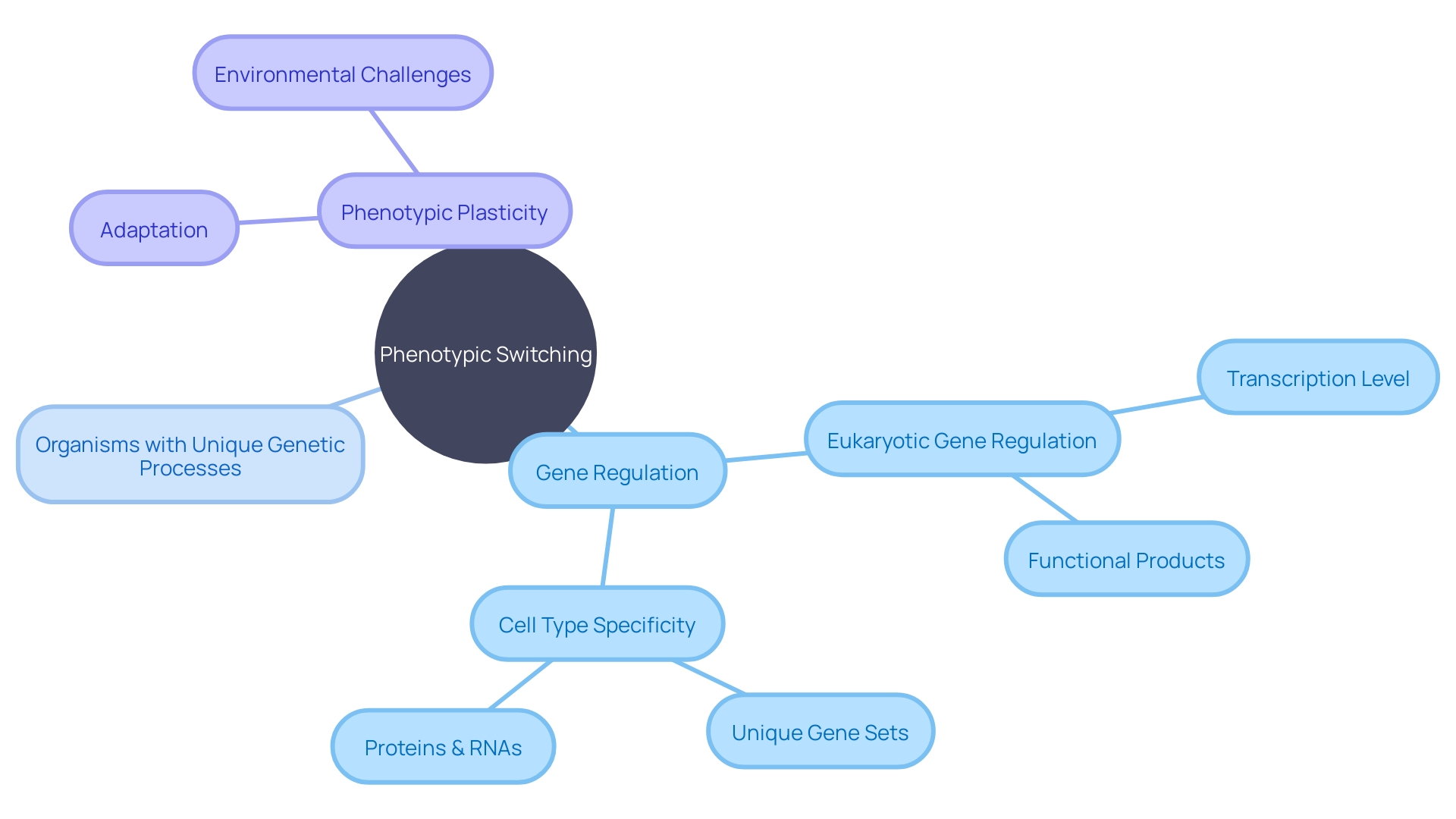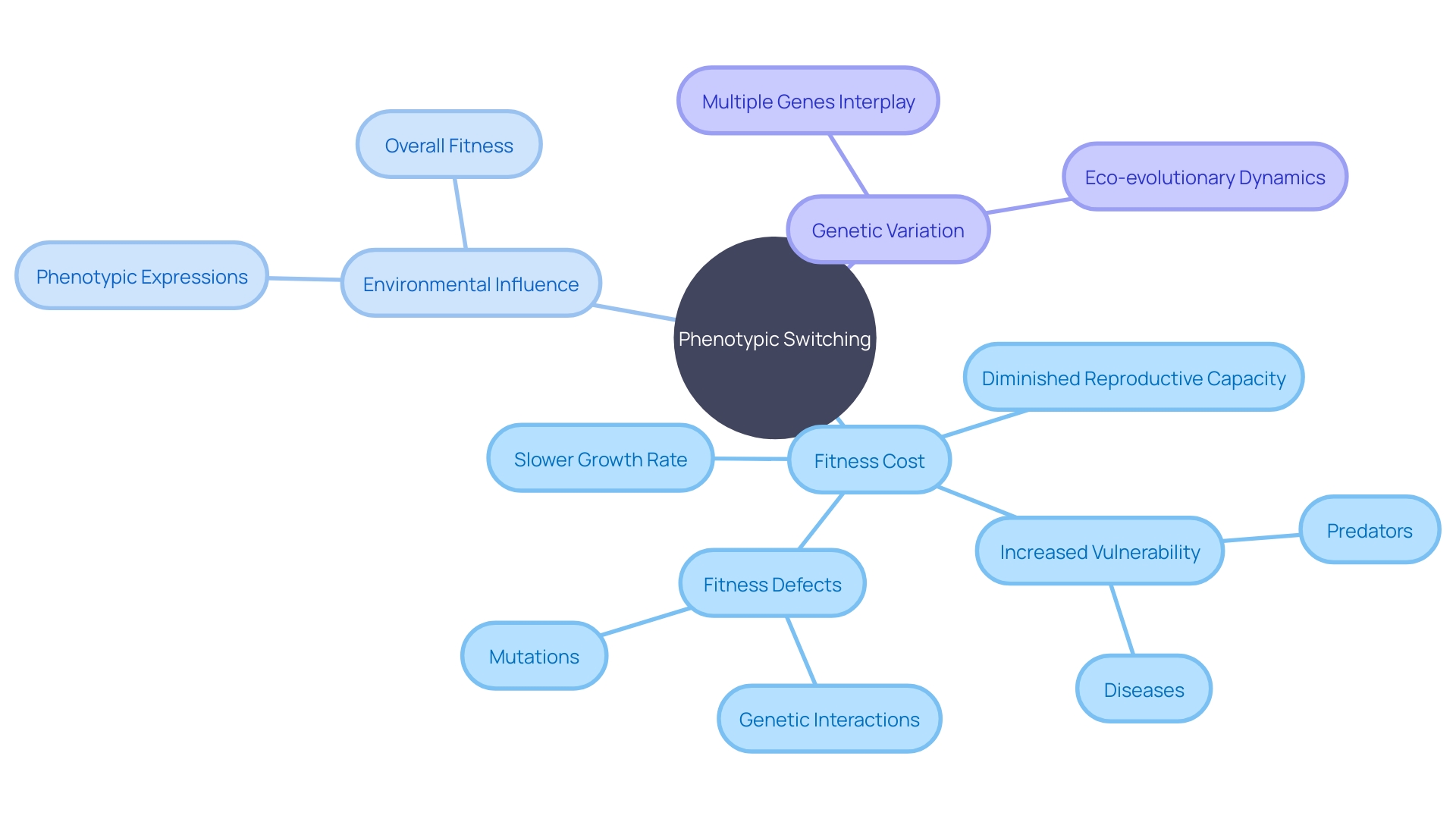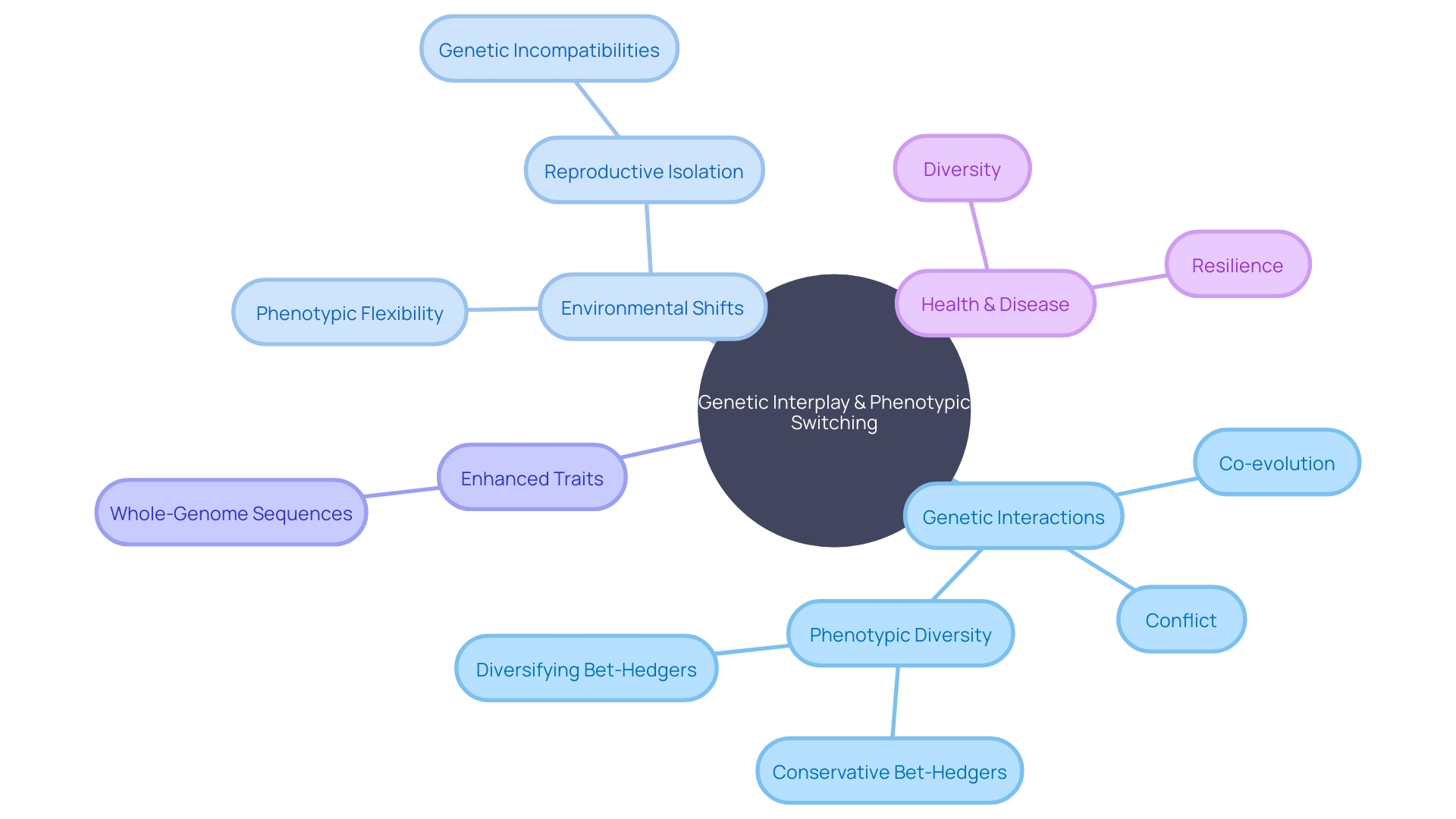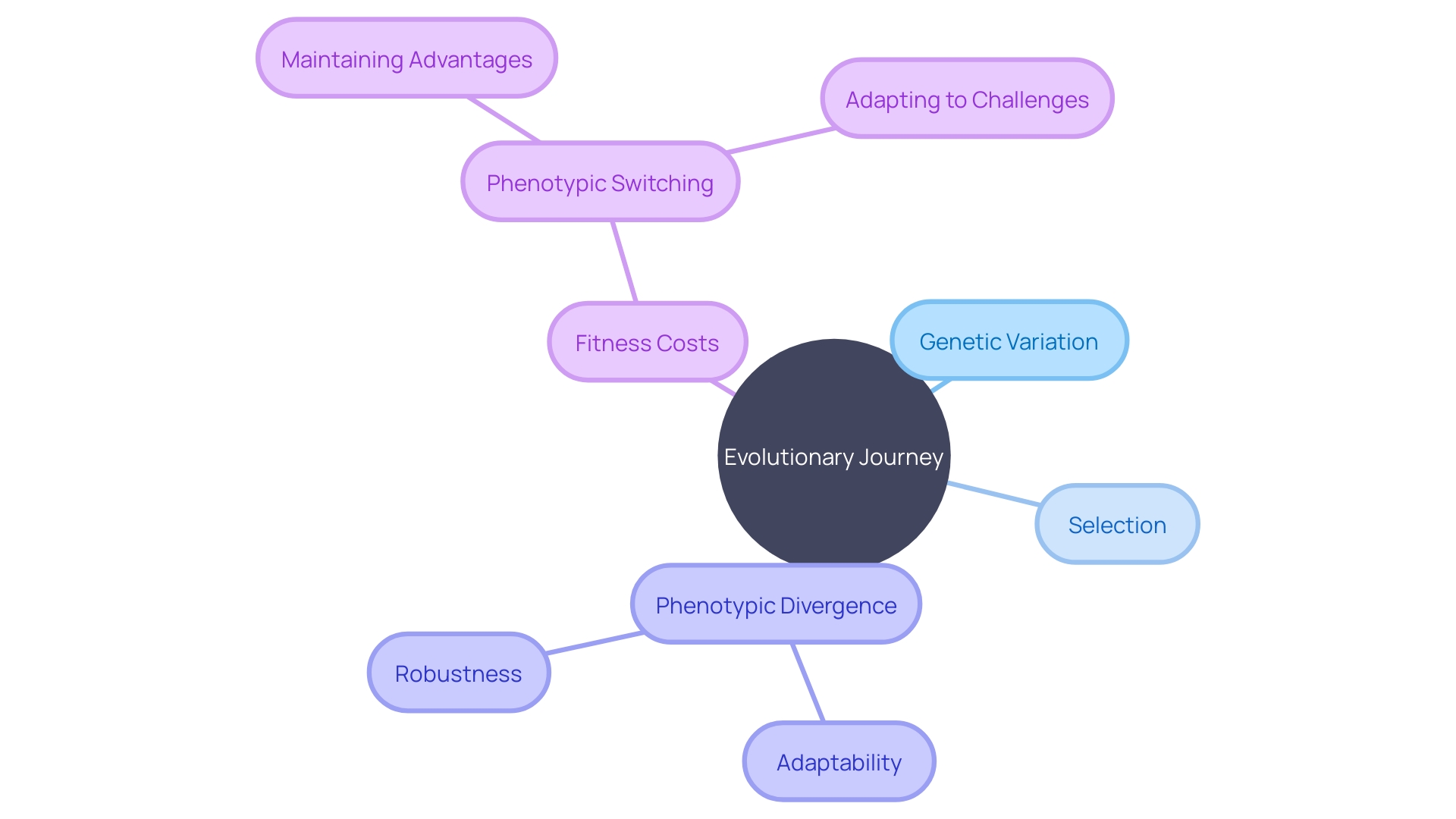Introduction
Phenotypic switching, the ability of organisms to alter their observable traits in response to environmental challenges, represents a remarkable adaptability in the world of biology. This dynamic process, underpinned by gene regulation, allows cells and organisms to toggle between different phenotypes, ensuring resilience across fluctuating habitats.
In this article, we will explore the significance of phenotypic switching, the fitness costs associated with it, the trade-offs involved, and the implications for evolutionary dynamics. Through recent discoveries and scientific insights, we will gain a deeper understanding of how organisms adapt and evolve in the face of changing environments. Join us as we uncover the fascinating world of phenotypic switching and its impact on life's diversity and resilience.
Understanding Phenotypic Switching
Phenotypic switching represents the remarkable adaptability of life, where organisms demonstrate versatility by altering their observable traits in response to environmental challenges. In the intricate dance of survival, cells and organisms toggle between phenotypes, ensuring resilience across fluctuating habitats.
This dynamic process is underpinned by gene regulation, a complex orchestration determining which genes are expressed to produce proteins and functional RNAs. The expression of these genes endows cells with distinct properties, despite sharing identical DNA.
Recent discoveries shed light on this phenomenon. For instance, Dr. Jamie McGowan's research unveiled a novel protist species with a unique DNA translation process.
This microscopic organism, isolated from a freshwater pond, exemplifies the unexpected ways life can manipulate its genetic code. Similarly, the liverwort Marchantia polymorpha, studied by Liam Dolan's group, exhibits a shade-avoidance response akin to that of vascular plants, yet the underlying genetic mechanisms appear to have evolved independently.
Moreover, the sequencing of Chiridota heheva's genome, a deep-sea cucumber, underscores the vast regulatory networks at play within eukaryotic cells. These networks govern gene expression through numerous stages, with transcription being a primary control point. Such findings underscore the intricate gene regulation landscape, which is crucial for understanding how organisms adapt and evolve. The significance of phenotypic switching extends to anthropogenic impacts on the environment, as highlighted by research on the firefly Photuris versicolor. Artificial light at night, a ubiquitous byproduct of human activity, disrupts the natural behaviors of these insects, illustrating the broader ecological consequences of phenotypic plasticity. These insights affirm that understanding the regulatory mechanisms of gene expression is not only fundamental to biology but also pivotal for addressing physiological disorders and environmental challenges.

The Fitness Cost of Phenotypic Switching
Phenotypic switching is a fascinating survival mechanism, but it's not without its drawbacks. The term 'fitness cost' refers to the decrease in an organism's reproductive success due to this switching. These costs can take various forms, including a slower growth rate, diminished reproductive capacity, or an increased vulnerability to predators and diseases.
For instance, studies have shown that mutations, which are a form of genetic switch, can have different effects based on their genetic context. This variability can lead to fitness defects, as seen in yeast experiments where over one hundred different lines were transformed, resulting in significant phenotypic changes. The complexity of these genetic interactions is underscored by the fact that even within dense gene networks, where co-evolution is tight, the introduction of a mutation can have unpredictable consequences.
These findings challenge the notion that all phenotypic variations are equally significant for an organism's fitness. In fact, the environment plays a crucial role, as seen in microbial populations. Here, finite resources and cellular constraints lead to a range of phenotypic expressions, influencing the overall fitness of the genotype.
As one expert put it, traits are not simply a checklist of genes; they emerge from a complex interplay of multiple genes. This complexity is echoed in the eco-evolutionary dynamics of organisms, where fitness landscapes show that the level of drug resistance, for instance, can approximate fitness under certain conditions. Understanding the fitness cost of phenotypic switching is essential to grasp the evolutionary trade-offs and the intricate relationship between genetic variation and organismal success.

Trade-offs in Phenotypic Switching
The interplay of genetics in the formation and survival of species is a captivating dance of complexity and adaptability. It's not simply a matter of one gene dictating a trait, but an intricate network where genes interact, co-evolve, and sometimes conflict, particularly in hybrids.
This genetic interplay can manifest in phenotypic switching, a strategy some organisms employ to navigate changing environments. Phenotypic switching, however, is not without its costs and benefits, which vary across different environments.
For instance, diversifying bet-hedgers (BHs) distribute phenotypic diversity amongst their offspring, ensuring that some will thrive regardless of environmental shifts. Conversely, conservative BHs maintain a generalist phenotype that provides moderate fitness across various conditions.
This evolutionary strategy is particularly advantageous when environmental changes are unpredictable, allowing organisms to survive sudden cold snaps, as seen in the timing of insect diapause, or persist through antibiotic treatment, as observed in bacteria. Recent breakthroughs, such as the discovery by Chinese scientists overcoming reproductive isolation in rice hybrids, underscore the importance of understanding these genetic interactions. These hybrids, combining traits from Japonica and Indica rice, exhibit enhanced strength and resistance to pests and diseases, yet traditionally couldn't produce fertile offspring due to genetic incompatibilities. The unraveling of this genetic puzzle not only advances agricultural practices but also offers a tangible example of how phenotypic flexibility can be harnessed. Similarly, the release of whole-genome sequences from projects like UK Biobank provides unprecedented opportunities to dissect the genetic foundations of health and disease, further illuminating the intricate dance of genes that underpins life's diversity and resilience.

Implications for Evolutionary Dynamics
The evolutionary journey of organisms is profoundly influenced by the fitness costs associated with phenotypic switching. This cost acts as a selective pressure, guiding the frequency and stability of phenotypic variation within populations. When fitness costs are high, the tendency is to favor a consistent phenotype, while lower costs may encourage a more dynamic expression of traits, increasing adaptability and phenotypic diversity in response to environmental flux.
Current research, including a comprehensive genetic dataset analysis over 50 generations, underscores the complexity of the relationship between genetic variation, selection, and phenotypic divergence. It reveals that redundancy in genetic solutions and standing genetic variation are key to understanding adaptability. Notably, a study on Darwin's finches has demonstrated the practical implications of these dynamics, showing that certain beak traits correlate with survival, thus illustrating the 'peaks' and 'valleys' of the fitness landscape.
In this intricate dance of evolution, the concept of 'soft' trade-offs introduces a novel source of variability, which, unlike 'hard' trade-offs, allows for stochastic outcomes that are more reflective of the natural world. This concept helps reconcile the observed biological diversity with theoretical predictions, emphasizing the importance of adaptability and robustness in the face of environmental changes. As organisms navigate their fitness landscapes, they must balance the need to maintain advantageous traits with the capacity to adapt to new challenges, a balance that is continually shaped by the forces of natural selection.

Conclusion
Phenotypic switching is a remarkable adaptability in biology, allowing organisms to alter traits in response to challenges. Recent discoveries have revealed the intricate gene regulation landscape and its role in adaptation.
However, switching has fitness costs such as slower growth, reduced reproduction, and vulnerability. Genetic trade-offs vary, with some organisms diversifying traits among offspring and others maintaining generalist phenotypes.
Understanding these dynamics advances agriculture and health research. Fitness costs guide phenotypic variation within populations, favoring consistency or adaptability based on the environment.
Soft trade-offs introduce variability that reflects the natural world. Organisms balance advantageous traits with adaptation as they navigate fitness landscapes shaped by natural selection. In summary, phenotypic switching provides insights into how organisms adapt and evolve. Understanding this adaptability deepens our appreciation for life's diversity and resilience.





